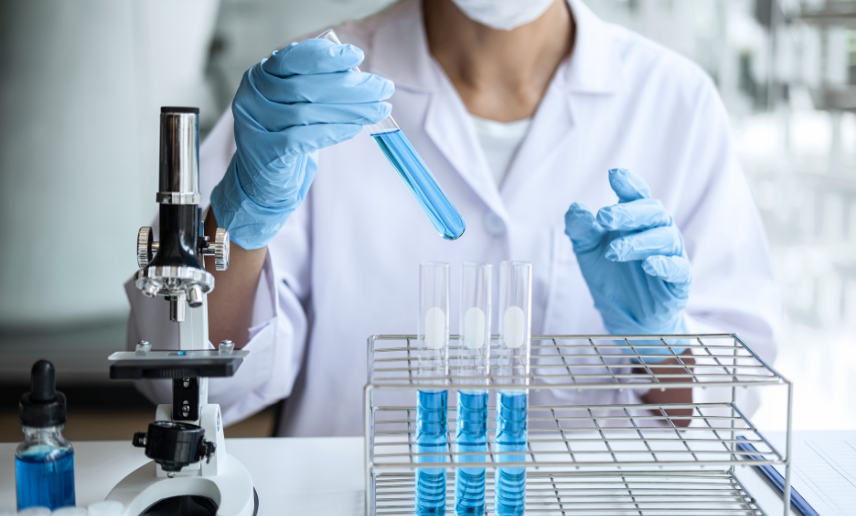Best Test Tubes for U.S. Laboratories in 2025
Introduction
In modern laboratory workflows—whether in clinical diagnostics, research, or industrial QC—selecting the right test tube can make a meaningful difference in accuracy, safety, and cost‑efficiency. Although they may appear to be simple items, the humble test tube comes in many forms, with varied materials, sizes, closures and specifications. As we move into 2025, evolving regulatory demands (e.g., traceability, sterility, disposability), supply‑chain constraints and cost‑pressures mean that lab‑managers must be more deliberate in their choices.
1. Key selection factors
Before buying test tubes, it’s important to consider several dimensions. The proper selection hinges on materials, size/volume, compatibility, closure/sterility, and purpose of use.
Here are the key factors:
- Material (glass vs plastic):
- Glass (often borosilicate) offers excellent chemical resistance and thermal stability (ideal for heating, harsh reagents).
- Plastic (polypropylene, polystyrene, etc) is lighter, less fragile, often cheaper/disposable, suitable for many biological applications—but may lack high‑heat or solvent durability.
- Size / volume / geometry:
- Typical test tubes range from a few mL up to 50 mL or more.
- The diameter/length/shape (round‑bottom, flat‑bottom, conical, rimmed/unrimmed) impacts compatibility with racks, heating blocks, centrifuges.
- Closure / cap / sealing / graduations:
- Some tubes are open‑top (classic style), others have screw caps, stoppers or push‑on caps (important for storage, transport, avoiding evaporation/contamination).
- Graduations (volume markings) matter if used for approximate measurement rather than purely containment.
- Application compatibility:
- Heating? Use glass.
- Centrifugation? Use tubes rated for rotor speeds.
- Biological sample storage? Use sterile, preferably disposable plastic, with proper cap.
- Chemical resistance? Choose material accordingly (glass or specific plastics).
- Sterility / reuse vs disposable:
- Reusable glass may be cost‑effective if cleaning/autoclaving is viable.
- Disposable plastic reduces cross‑contamination risk and labor of cleaning, critical in clinical/diagnostic labs.
- Regulatory / supplier / traceability:
- Especially in U.S. clinical labs (CLIA, CAP, CAP‑ARO, FDA regulated) the labware must meet standards for sterilization, lot traceability and supplier reliability.
- Cost / supply‑chain / inventory management:
- Tubes are consumables—but price adds up. Also lead‑time/supply risk is real in 2025 (post‑pandemic, supply‑chain resilience pressure).
- Fit with laboratory workflow & equipment:
- Racks, auto‑handlers, centrifuges, storage systems must align with the tube size/format. For example, standard 13×100 mm or 16×100 mm tubes are common.

2. Types of Test Tubes & their typical applications
Here’s a breakdown of commonly used types and how they correspond to different lab workflows.
a) Standard glass test tubes
These are the classic cylindrical tubes made of glass (often borosilicate). They are used for mixing, heating, reaction observation, etc.
Typical use cases:
- Chemistry labs performing reagent mixing, heating, qualitative reactions.
- Teaching labs where heating or visible reaction is demonstrated.
- Storage where chemical resistance and autoclaving needed.
Pros/cons:
- Pros: High chemical & thermal resistance; reusable; clear view for reactions.
- Cons: Fragility; higher cost per unit; cleaning overhead; risk of breakage (safety hazard).
b) Plastic test tubes
These are tubes made from plastic materials (polypropylene, polystyrene etc). They are increasingly used, especially in biology or diagnostics, where breakage risk, cost, and disposal are considerations.
Typical use cases:
- Biological labs: sample storage, transport, non‑heated applications.
- Clinical diagnostics (non‑heated assays), large‑volume disposable workflows.
- Field labs or mobile labs where fragility is a big issue.
Pros/cons:
- Pros: Less breakage, often lower cost, lighter, disposable.
- Cons: Lower heat/chemical resistance; may leach or absorb compounds; often single‑use which increases consumable cost.
c) Culture tubes / microbiology tubes
Tubes designed for microbiological culture often have screw caps, sometimes venting or filters, may hold slants/broths. They may be glass or plastic.
Typical use cases:
- Growing bacteria/fungi in agar slants or liquid media.
- Microbiology teaching labs.
- Generating stocks of microbial cultures.
d) Centrifuge‑compatible / special tubes
While not strictly "test tubes" in the classical sense, many labs need tubes that can go into centrifuges (conical bottoms, thick walls, caps).
Typical use cases:
- Separating sample components (cells, plasma, precipitates).
- Clinical labs (blood/plasma separation), molecular biology labs (pellet recovery).
- Workflow requiring sealed tubes to avoid aerosolization.
e) Specialized variants: Graduated, Screw‑cap, Boiling tubes
- Graduated: tubes with volume markings for rough measurement.
- Screw‑cap or stoppers: needed where sample integrity/evaporation/contamination are concerns.
- Boiling tubes: thick‑walled glass tubes designed for direct heating/boiling—essential in demonstration labs or strong heating tasks.
3. Procurement & Usage Best Practices for 2025
Given the current landscape (inflation, supply‑chain constraints, regulatory scrutiny), here are best practices U.S. labs should adopt:
a) Standardize your inventory & supplier list
- Choose 1‑2 standard sizes (e.g., 16×100 mm and 12×75 mm) for the majority of use‑cases; reduces SKU explosion and allows for bulk purchasing.
- Work with suppliers that can guarantee lot‑traceability and consistent specs (for clinical labs this is critical).
- Maintain supplier backup to avoid single‑source risk, especially for critical items.
b) Align material with application
- Use glass when heating, chemicals, or reuse are needed.
- Use plastic for disposable workflows, biological samples, or where breakage risk is high.
- Ensure closures (caps/stoppers) match sample handling / storage requirements.
c) Monitor consumable cost vs reusable cost
- Reusable glass may look cheaper long‑term but factor in cleaning/sterilizing labor, breakage, and quality drift.
- Disposable plastic may cost more per unit but saves on labor/time and reduces contamination risk.
- For high‑throughput labs, consumables cost is non‑trivial; negotiate volume pricing, review contracts annually.
d) Quality‑control & documentation
- Ensure each lot of tubes meets specs (dimensions, wall thickness, material grade) especially if they are used in analytical workflows.
- For clinical/diagnostic labs: maintain records of supplier, lot, sterilization/expiry where applicable.
- Train users on proper tube handling (especially glass) to minimise breakage and cross‑contamination.
e) Storage, handling, safety
- Glass tubes need racks, preferably padded, to reduce breakage.
- Use correct racks for size; mis‑sized racks cause instability.
- Labeling: use durable labels or marking zones; none of the tubes are truly ‘non‑labelable’.
- Disposal: glass broken tubes = sharps risk. Plastic disposables may be biohazard depending on content—plan accordingly.
f) Stay alert to supply‑chain shifts
- In 2025, global supply disruptions still happen (raw‑material (plastic) shortages, shipping delays).
- Maintain safety stock of critical consumables—especially if your lab supports diagnostics or critical testing.
- Review contract terms to include lead‑time guarantees, price escalations, and substitution approval processes.
g) Fit for equipment
- Before switching tube formats/sizes, test fit with existing racks, centrifuges, auto‑handlers. Misfits cause downtime.
- For example: thin‑walled tubes might not be rated for high‑speed centrifugation. Supplier spec sheets must be checked.
h) Consider environmental/ sustainability factors
- Although glass is reusable, cleaning/sterilization has energy/water cost.
- Some labs may prefer recyclable plastic, lower‑impact consumables.
- Monitor waste streams (plastic tubes are a significant consumable).

4. Recommendations for U.S. Lab Types
Here are tailored recommendations depending on the type of U.S. laboratory.
Clinical Diagnostic Laboratories
- Prioritise sterility, traceability, disposability to minimise cross‑contamination risk and infection control.
- Use plastic tubes with reliable screw‑cap closures for sample transport/storage (e.g., the RIA plastic capped tube).
- For biochemical/chemical testing where heating is minimal, plastic may suffice; but for some heating/chemical steps, have glass backup.
Research (Chemistry / Materials) Laboratories
- Mostly need glass (borosilicate) tubes due to heating/chemistry demands. The Karter Scientific glass tube is a good general‑purpose.
- Keep specialty tubes (side‑arm, thick‑walled boiling tubes) for advanced setups.
- Consider reusable vs disposable trade‑offs: you may favour reusable glass if cleaning/autoclave infrastructure exists.
Biological / Microbiology Labs
- Use sterile plastic culture tubes (such as the MTC Bio culture polypropylene tubes) for growing organisms.
- For sample storage that may be freezer/ultra‑low‑temp, check plastic compatibility with low‑temperature (some plastics become brittle).
- Use screw/capped tubes for storage/transport of sensitive biological materials.
Industrial/Quality Control Laboratories
- For routine QC (non‑sterile) workflows, cost‑efficiency matters: using economy glass or plastic tubes may make sense.
- Standardize on one or two sizes to simplify workflow/racks.
- Ensure tubes meet durability spec for the materials being handled (e.g., solvent resistance if testing coatings/chemicals).
5. Conclusion
Choosing the “best test tube” in 2025 is less about the single perfect product and more about aligning the right type of tube to your laboratory’s workflow, materials, regulatory regime, and budget. In the U.S. market, labs face pressures of reproducibility, cost‑containment, supply‑chain resilience and regulatory compliance.
Key takeaways:
- Material matters (glass vs plastic) based on application.
- Standardizing sizes and formats reduces complexity and cost.
- Supplier reliability, lot traceability and documentation are critical, especially in clinical/diagnostic labs.
- Disposable vs reusable is a strategic decision—not just cost per unit but total lifecycle cost.
- Fit with existing equipment, racks, centrifuges, and handling procedures must be verified before switching formats.
- Stay ahead of supply‑chain risk by maintaining stock and working with reliable vendors.
By applying the criteria and product examples above, U.S. labs can make smarter purchasing decisions, improve workflow reliability, and mitigate risk — all while controlling consumable costs.
CLEARANCE SALE:







Leave a comment